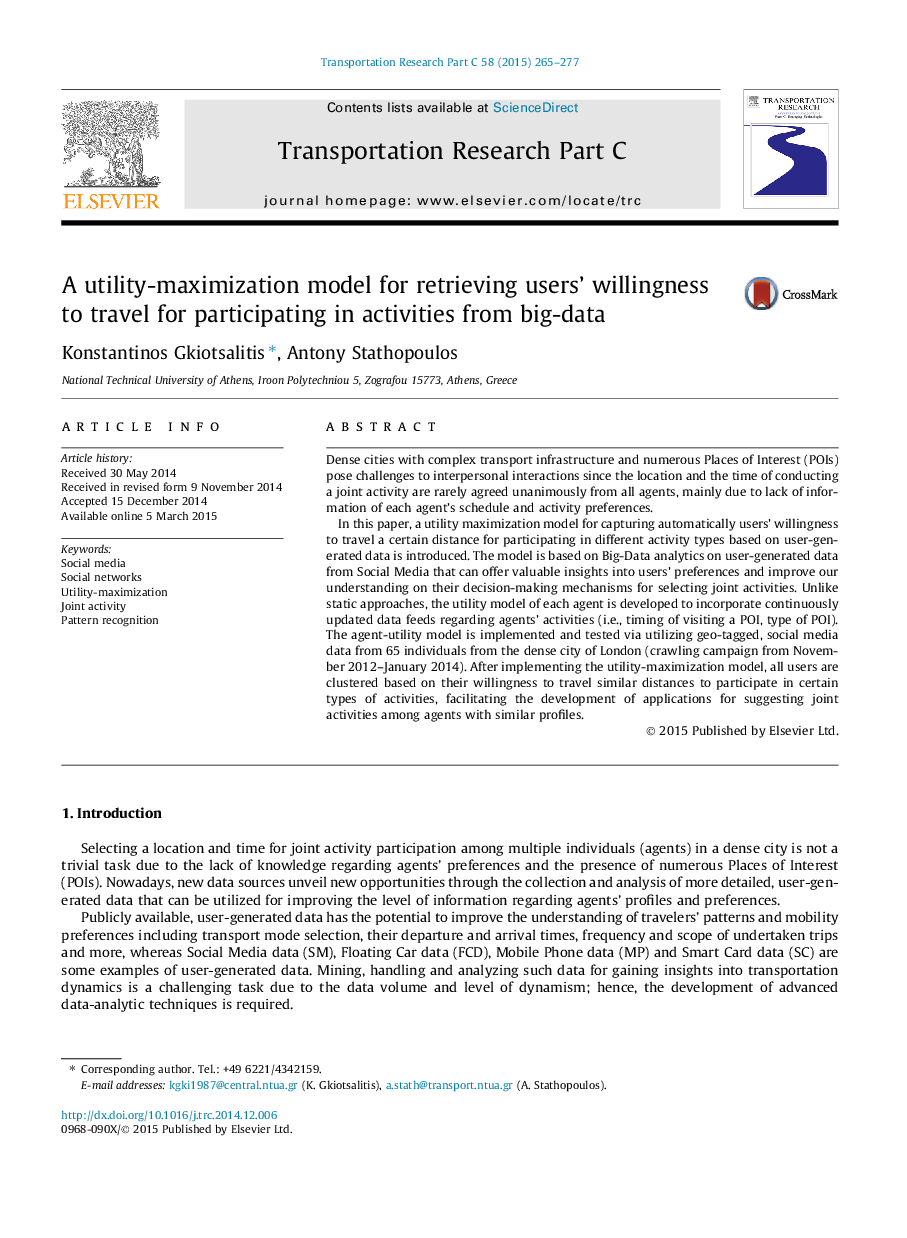| Article ID | Journal | Published Year | Pages | File Type |
|---|---|---|---|---|
| 524888 | Transportation Research Part C: Emerging Technologies | 2015 | 13 Pages |
•Empirical rules for associating activities to locations via Big Data processing with observed accuracy of more than 90% validated with the use of Social Media traces in London.•Utility-Maximization model for capturing users’ willingness to travel certain distances to participate in different types of activities (results demonstrated with Social Media data).•Introduce methods for travelers’ clustering based on their mobility and activity patterns.•Demonstrate how automatic approaches for recognizing mobility and activity patterns can be utilized for suggesting joint activities.
Dense cities with complex transport infrastructure and numerous Places of Interest (POIs) pose challenges to interpersonal interactions since the location and the time of conducting a joint activity are rarely agreed unanimously from all agents, mainly due to lack of information of each agent’s schedule and activity preferences.In this paper, a utility maximization model for capturing automatically users’ willingness to travel a certain distance for participating in different activity types based on user-generated data is introduced. The model is based on Big-Data analytics on user-generated data from Social Media that can offer valuable insights into users’ preferences and improve our understanding on their decision-making mechanisms for selecting joint activities. Unlike static approaches, the utility model of each agent is developed to incorporate continuously updated data feeds regarding agents’ activities (i.e., timing of visiting a POI, type of POI). The agent-utility model is implemented and tested via utilizing geo-tagged, social media data from 65 individuals from the dense city of London (crawling campaign from November 2012–January 2014). After implementing the utility-maximization model, all users are clustered based on their willingness to travel similar distances to participate in certain types of activities, facilitating the development of applications for suggesting joint activities among agents with similar profiles.
